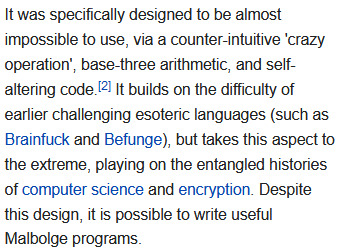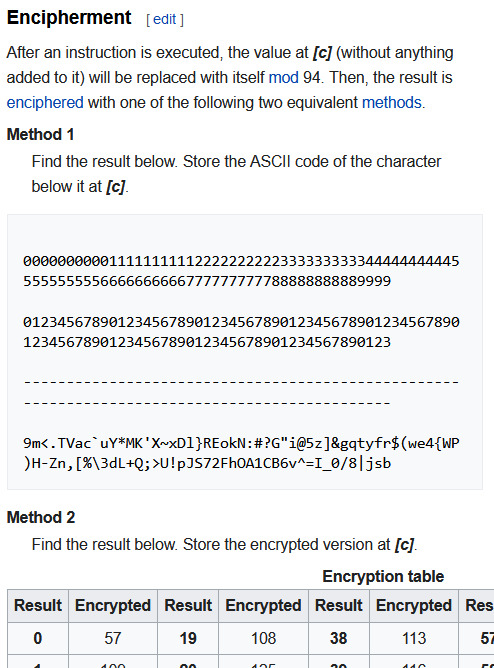#machine language
Explore tagged Tumblr posts
Text

3 notes
·
View notes
Text
Machine learning is an exciting field that has been growing rapidly over the past few years. With the increasing demand for machine learning skills, there has never been a better time to start learning about this field. In this article, we'll provide some tips on how to get started with machine learning.
#machine learning#machine language#technology#programming#techaedu#development#coding#java#ml#tech#html#developers
11 notes
·
View notes
Text

MACHINE LEARNING: A PRACTITIONER'S APPROACH
By Vinod Chandra and Anand Hareendran
We are delighted to present our cutting-edge textbook MACHINE LEARNING: A PRACTITIONERS APPROACH designed for undergraduate and postgraduate students in computer science, engineering, and IT.
Key Features:
Interactive Learning Approach
Machine Learning Demystified
Nature-Inspired Computing Explored
Ideal for Students
Intended for: Students, Academicians, and Tech Enthusiasts
Embrace the future of computing. Order your copy today! http://social.phindia.com/rQjCUaFq
#machine learning#phibooks#philearning#ebook#phibookclub#amazon#kindle#undergraduate#education#books#machinelearning#machine language#ai
3 notes
·
View notes
Text
FORBIDDEN TONGUE
Every now and then I remember that Malbolge exists and I get to spend the better part of an hour cry-laughing at the world’s worst programming language

already starting off strong, but it gets worse

Wow! Sounds easy and intuitive to use! What’s the “crazy operation” you ask? We’ll get to that later. For now let’s see what a program in this language looks like :)

Thanks! I hate it!

it’s so difficult to work with that the first program was written by another brute force search program

mmmmm delicious base-3 arithmetic, what could go wrong? (For reference, that means this program forgoes the usual “0/1″ values of binary code in favor of a much more fun “0/1/2″ set of values)

ah.

Here’s how the language actually figures out what to do. It’s got 8 “simple” commands that can be executed easily by *checks notes* running the code itself through the modulo operation and taking the result.

As a bonus, on top of all that every single character in your code will now alter what every single other character does. So I hope you’re alright with cracking a cipher every time you add a new letter to your program!

oh god oh fuck.

behold, Malbolge’s primary arithmetic operation and what you’ll be using for most of your math while programming with it :)
This looks specifically designed to be the least logical math operation you could make, and knowing what the rest of Malbolge is I’d wager that’s precisely what happened. I never want to ever use this and it’s my favorite thing I’ve ever seen.
https://en.wikipedia.org/wiki/Malbolge
Anyways here’s the wiki page if you wanna read through it more deeply, I’m gonna sit here holding in my laughter staring at the hello world program again.
12K notes
·
View notes
Text
Utilize Customer Data to Personalize Marketing Efforts
#adaptive action#Agile Project Management#Agile Projects#artificial intelligence#creative projects#Customer Experience#Customer Value#Delivering Value Propositions#Human Systems Dynamics#hyperautomation#machine language#Managing Customer Value#Market-Value Pricing#Product Development#Product Managers
0 notes
Text
Looking for a tech partner that delivers? CodEdu, based in Kochi, is transforming businesses with custom software, mobile apps, and branding solutions. With over 200 projects completed, they specialize in scalable, innovative tech services that cater to both local and international clients. But they’re not just about building great tech—they’re also about building talent. Through CodEdu Academy, you can dive into top-notch courses like Data Science or Fullstack Development to sharpen your digital skills. Ready to level up? Learn more about them here.
#software developers#full stack developer#digital marketing#python#machinelearning#machine language#kochi#kerala#studying software#learn digital marketing#learnprogramming#coding academy
0 notes
Text
hozier songs are all "i wouldn't be here without black artists" "you should kill your boss" "i love ireland :(" "DO Y OU NEED A DOG. I CAN BARK"
#the range is so funny to me genuinely. here's a song about black artists. here's a song about the war machine. here's a love song#intermixed with observations that Shits Bad Out There but i love you :'). wish i could hear my countries language spoken more often but#no! colonialism took that! hhhey babe can y ou pull my hair. you can do anything pleas e#i love you (we're better than god) i love you (*bass drum thumping* I GIVE HEAD)
5K notes
·
View notes
Text
Unveiling the Power of Text Embeddings: A Pillar in Natural Language Processing

Introduction
In the vast realm of Natural Language Processing (NLP), text embeddings have emerged as a fundamental and powerful tool, revolutionizing the way computers understand and process human language. Text embeddings represent a breakthrough in transforming raw textual data into a format that machines can comprehend, facilitating various applications across industries. This article delves into the significance of text embeddings and explores their diverse uses in the ever-evolving landscape of NLP.
Understanding Text Embeddings

Text embedding is a technique used in natural language processing (NLP) to represent words or sentences as numerical vectors in a high-dimensional space. The goal of text embedding is to capture semantic relationships between words or phrases, enabling machines to understand and process textual information more effectively. One popular method for text embedding is word embedding, which represents individual words as vectors.
Here’s a brief explanation of how text embedding works, focusing on word embedding:
Word Embedding:
Word embedding techniques map words to continuous vector spaces where semantically similar words are located closer to each other.
One common method is to use pre-trained word embeddings, such as Word2Vec, GloVe, or FastText. These embeddings are learned from large text corpora and capture semantic relationships.
Neural Network Architecture:
Word embeddings are often learned using neural network architectures, such as shallow neural networks, recurrent neural networks (RNNs), or more commonly, deep neural networks like the word2vec Skip-Gram and Continuous Bag of Words (CBOW) models.
Training:
During training, the neural network learns to predict the context of words in a given sentence. In the Skip-Gram model, the objective is to predict the context words given a target word, while in CBOW, the goal is to predict the target word based on its context.
Vector Space Representation:
After training, each word is represented as a dense vector in a high-dimensional space. The dimensionality of these vectors is determined by the chosen embedding model but is typically in the range of a few hundred to a few thousand dimensions.
Importance of Text Embeddings

Semantic Understanding: Text embeddings empower machines to grasp the semantic meaning of words and sentences. By representing words in a continuous vector space, embeddings capture the relationships between words based on context and usage. This semantic understanding is crucial for various NLP tasks, such as sentiment analysis, text classification, and named entity recognition.
Efficient Information Retrieval: In information retrieval systems, text embeddings enhance search accuracy and relevance. By transforming documents or queries into vector representations, similarity metrics can be used to measure the closeness of these vectors, allowing for more efficient and precise retrieval of information. This is particularly valuable in search engines, recommendation systems, and content clustering.
Transfer Learning: Text embeddings facilitate transfer learning, where pre-trained models can be leveraged for downstream tasks. Pre-trained embeddings, such as Word2Vec, GloVe, or BERT, capture general language patterns from vast corpora, enabling them to be fine-tuned for specific tasks with limited labeled data. This accelerates model training and improves performance across various NLP applications.
Text Summarization and Generation: Embeddings play a pivotal role in text summarization and generation tasks. By encoding the essence of a document into a vector representation, machines can generate concise summaries or even create coherent sentences. This is invaluable in applications like automated content creation, chatbot responses, and news summarization.
Multimodal Understanding: In the era of multimodal data, where text is often accompanied by images, audio, or video, text embeddings provide a bridge for understanding different modalities. Integrating text embeddings with embeddings from other modalities enables more comprehensive analysis, facilitating tasks like image captioning, sentiment analysis in videos, and cross-modal retrieval.
Final Thoughts
Text embeddings have emerged as a linchpin in advancing the capabilities of Natural Language Processing, fostering a deeper understanding of language semantics and enhancing the efficiency of various applications. As technology continues to evolve, text embeddings will likely play a pivotal role in shaping the future of human-machine interactions, enabling machines to navigate the complexities of language with unprecedented accuracy and sophistication.
0 notes
Text
The Ultimate Guide to Machine Learning Certification.

The certification offers a well-structured curriculum covering foundational concepts such as linear regression and classification to advanced topics like natural language processing and computer vision.
https://medium.com/@hi.aasmohammad/the-ultimate-guide-to-machine-learning-certification-f77e862569b2
0 notes
Text
AI hasn't improved in 18 months. It's likely that this is it. There is currently no evidence the capabilities of ChatGPT will ever improve. It's time for AI companies to put up or shut up.
I'm just re-iterating this excellent post from Ed Zitron, but it's not left my head since I read it and I want to share it. I'm also taking some talking points from Ed's other posts. So basically:
We keep hearing AI is going to get better and better, but these promises seem to be coming from a mix of companies engaging in wild speculation and lying.
Chatgpt, the industry leading large language model, has not materially improved in 18 months. For something that claims to be getting exponentially better, it sure is the same shit.
Hallucinations appear to be an inherent aspect of the technology. Since it's based on statistics and ai doesn't know anything, it can never know what is true. How could I possibly trust it to get any real work done if I can't rely on it's output? If I have to fact check everything it says I might as well do the work myself.
For "real" ai that does know what is true to exist, it would require us to discover new concepts in psychology, math, and computing, which open ai is not working on, and seemingly no other ai companies are either.
Open ai has already seemingly slurped up all the data from the open web already. Chatgpt 5 would take 5x more training data than chatgpt 4 to train. Where is this data coming from, exactly?
Since improvement appears to have ground to a halt, what if this is it? What if Chatgpt 4 is as good as LLMs can ever be? What use is it?
As Jim Covello, a leading semiconductor analyst at Goldman Sachs said (on page 10, and that's big finance so you know they only care about money): if tech companies are spending a trillion dollars to build up the infrastructure to support ai, what trillion dollar problem is it meant to solve? AI companies have a unique talent for burning venture capital and it's unclear if Open AI will be able to survive more than a few years unless everyone suddenly adopts it all at once. (Hey, didn't crypto and the metaverse also require spontaneous mass adoption to make sense?)
There is no problem that current ai is a solution to. Consumer tech is basically solved, normal people don't need more tech than a laptop and a smartphone. Big tech have run out of innovations, and they are desperately looking for the next thing to sell. It happened with the metaverse and it's happening again.
In summary:
Ai hasn't materially improved since the launch of Chatgpt4, which wasn't that big of an upgrade to 3.
There is currently no technological roadmap for ai to become better than it is. (As Jim Covello said on the Goldman Sachs report, the evolution of smartphones was openly planned years ahead of time.) The current problems are inherent to the current technology and nobody has indicated there is any way to solve them in the pipeline. We have likely reached the limits of what LLMs can do, and they still can't do much.
Don't believe AI companies when they say things are going to improve from where they are now before they provide evidence. It's time for the AI shills to put up, or shut up.
5K notes
·
View notes
Text

This is what happens inside the buddy towers while they wait for Kirby, me thinks
Based on this post I made about Dedede watching TV and this amazing tag someone reblogged it with

#kirby#kots#kirby of the stars#kirby fanart#hoshi no kirby#king dedede#meta knight#kirby meme#metadede#Kirby fighters 2 is forever the gift that keeps on giving#on other news i finally learnt how to make animations on clip studio#does anyone know how to upload gifs to the gif machine im computer illiterate#meta knight’s love language is fighting#dedede is just stubborn and gets actually pissy#do you know how hard it is to accommodate kirby characters on a base for a meme#with their weird anatomy and lack of limbs#meta knight can’t sit crossed legged and dedede doesn’t have knees#so i did my best#if someone already drew this meme im so sorry#i just fucking realized i fucked up dedede’s clothes in the last frame i may as well end it all
2K notes
·
View notes
Text

New Arrival!
ARTIFICIAL INTELLIGENCE AND INDUSTRY 5.0
Artificial Intelligence and Industry 5.0 is a textbook that bridges theoretical foundations of AI with its applications in the emerging areas of Industry 5.0. The book is written to provide a foundation for machine learning and deep learning with their applications in natural sciences by providing worked-out examples and exercises.
The book takes a balanced approach between the theoretical basis for machine learning and its applications. It covers topics including artificial neural networks, machine learning, supervised and unsupervised learning, deep learning, convolution neural networks, and recurrent neural networks. Besides, the book also includes topics such as pattern recognition, natural language processing and metaheuristic algorithms which will give readers to understand some of the vital areas where AI plays a significant role. The well-explained algorithms and pseudocodes for each topic help students to apply them in their relevant field. The book, besides discussing the topics prescribed in the syllabus, is enriched with the research experience of the authors from different fields, including Theoretical or Computational Chemistry, Bioinformatics, and Computer Sciences, and various training programs conducted for the students/research community.
This book is a result of 6 years of group discussions that took place with the groups of eminent professors and researchers in the field. For brief leactures/PPTs, the readers can visit PHI Learning Centre or https://github.com/gnsastry/ACDS-Lectures .
KEY FEATURES
• Includes topics prescribed in the syllabus as well as the latest research in the field.
• The book provides a mathematical foundation and learning techniques in Artificial Intelligence, Machine Learning and Deep Learning.
• Each chapter comprises a set of worked-out examples and exercises which are focused on the key concepts.
• The book is organized with fundamental concepts and applications in natural sciences, healthcare, drug discovery, environmental sustainability, and more.
TARGET AUDIENCE
• B.Tech Computer Science and Engineering
• B.Tech AI and ML
• B.Tech all branches for elective course
#ai#artificialintelligence#artificial intelligence#machinelearning#machine language#algorithms#phibooks#philearning#phibookclub#algorithm#genesis
0 notes
Text
ChatGPT Integration Services:
At Intelvue, we understand that every business is unique, and that's why our ChatGPT Integration Services are tailored to your specific needs. Our team of skilled developers and AI specialists work hand-in-hand with you to design and implement seamless integrations that align with your goals. From initial consultation to deployment and ongoing support, we're committed to ensuring your success. Elevate your customer experience and stay ahead in the competitive landscape with Intelvue's ChatGPT Integration Services. Revolutionize how you connect, communicate, and excel in the digital age. https://www.intelvue.com/chatgpt-integration-services/

#ai chatbot#ai generated#openai#ai technology#chatgpt#chatter#discord chat#chatbot#chatbots#just chatting#talk#ask anything#virtual assistant#machine learning#machine language#nlp
0 notes
Text

Projects just need precise planning and execution. Traditional project management methods have worked well in the industry for decades. Project complexity, market volatility, and evolving stakeholder requirements create the most important challenges for project managers today. The adaptive project framework provides a modern solution that helps teams respond to change while retaining control and streamlining processes. https://business901.com/blog1/how-to-optimize-projects-with-an-adaptive-project-framework/
#adaptive action#Agile Project Management#Agile Projects#creative projects#Customer Experience#Customer Value#Delivering Value Propositions#Human Systems Dynamics#machine language#Managing Customer Value#Market-Value Pricing#Marketing Clusters#Product Development#Product Managers
0 notes
Text
0 notes